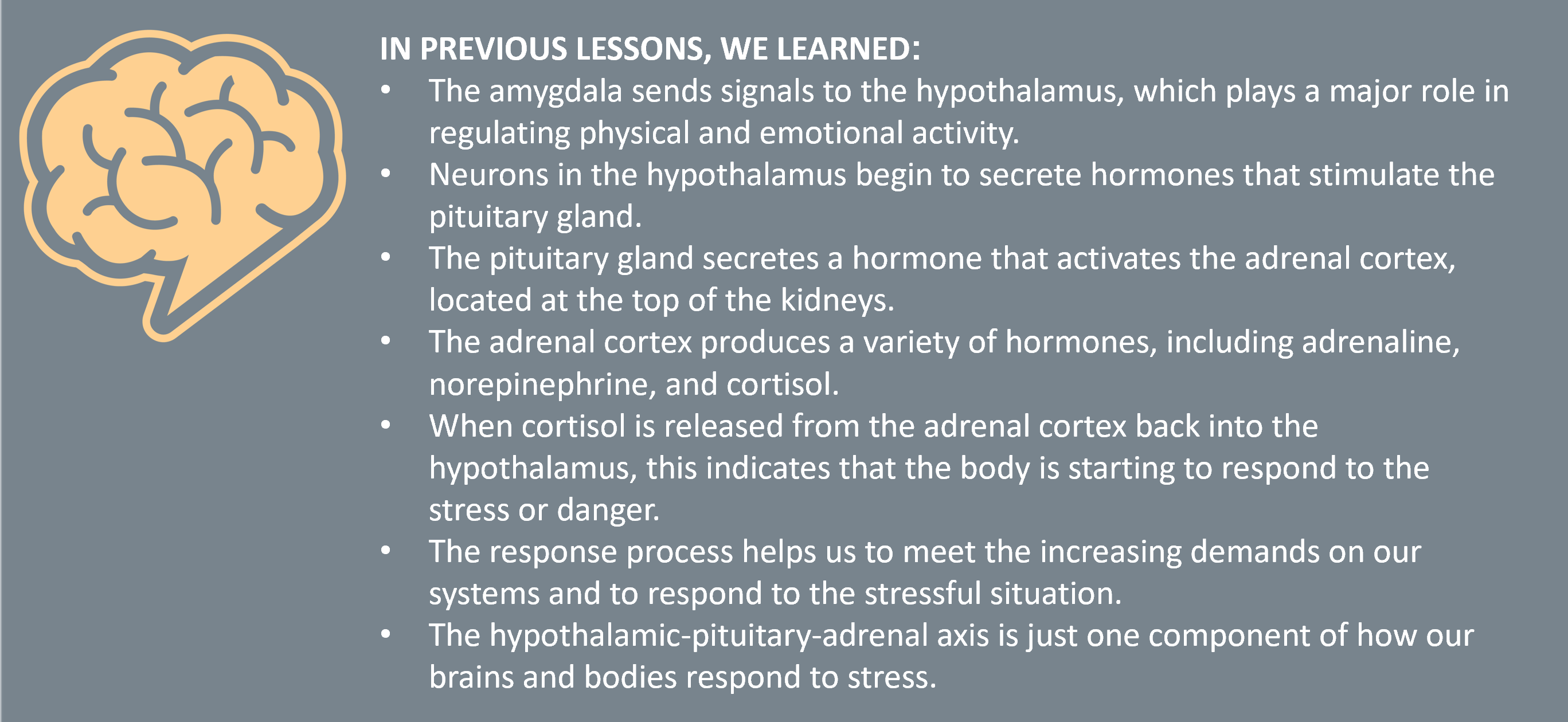
Lesson objective:
In this lesson, we outline the autonomic nervous system, its sections, and its functions.
We have mentioned in the previous videos that stress usually comes in bursts or waves. It is usually, in most occurrences, temporary.
Like…
When we go for a run.
When we have to study for an exam.
When we argue with a loved one.
When we worry for a time about the future.
Our ability to healthily confront stress depends on our bodies’ ability to quickly adapt and mobilize the stress response, which includes activation of the HPA Axis, as we previously talked about.
But beyond the HPA axis, researchers also pay attention to the autonomic nervous system .
Among all the networks of the nervous system, the autonomic nervous system plays a key role in the stress response.
The autonomic nervous system is responsible for many bodily functions that occur and regulate up and down, below our conscious awareness. Many of the forms of automatic regulation and allostasis discussed earlier involve the autonomic nervous system.
Minute to minute, second to second, we do not think about our heartbeat, our digestion, our body temperature, our lung functions, or processing waste.
Our bodies take care of these functions mostly automatically and unconsciously via the autonomic nervous system, and only sometimes we become consciously aware of the changes that have taken place, when we notice interoceptive signals like “my stomach is rumbling, I must be hungry!” of “I’m sweating,” or “my heart is racing.”
In other words, automatic functions like heart rate, respiratory function, pupillary response, or digestion are processes that the “elephant” has to worry about, by way of the autonomic nervous system.
The autonomic nervous system is divided into two subsystems.
These two systems are the sympathetic nervous system (SNS) and the parasympathetic nervous system (PNS). These subsystems are partners, with quite opposite but complementary roles. They are friends who desperately need each other, even though they are each quite different and unique in their functions.
Like the elephant and the rider–the tasks of these two parts of the autonomic nervous system are complementary, and in many cases, opposite from each other. It’s important to know what each “side” of the autonomic nervous system does, as we better understand the effects of stress, and what we can do to confront those effects. Stay tuned.